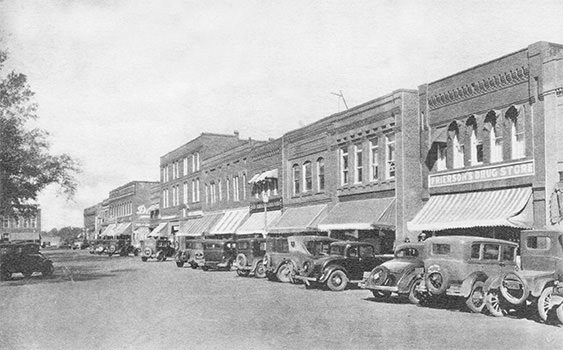History


Prior to its settling by immigrants of European descent, the Piedmont area of South Carolina was inhabited by the Cherokee Indians. During the Revolutionary War the Cherokees sided with the Britist. After the war the indian population was relocated to North Carolina. The area that was to become Belton developed a rural agrarian economy and was isolated from the main centers of trade in the state and nation from 1785 until the mid-1840’s. This changed in 1845 when talk of a railroad to connect Columbia and Greenville began with plans to follow a natural ridge west of the Saluda River. The Town of Belton railroad stop was officially established on December 19, 1855. The state issued a charter of incorporation to Belton and set as its town limits the area within a ½ mile radius from the railroad depot.

The local economy developed around the railroad and its main agricultural crop, cotton. Fortunately, Belton remained relatively unscathed during the Civil War. The town grew steadily throughout the latter 19th Century, attracting entrepreneurs who built some of the largest cotton mills in the state, which in turn increased the population and expanded the infrastructure of the town with a central water supply, electricity, phone lines, paved road, a hotel, retail stores and increased railway service.
Prior to 1909, the city of Belton utilized a community well, but with the advent of indoor plumbing the need for a sufficient water source was needed. The 160 foot tall Belton Standpipe was completed in 1909 and held a capacity of 150,000 gallons of water. The Standpipe, which features a castle turret, continues as the city’s landmark today and is listed on the National Register of Historic Places.

Belton continued to grow in the 1900’s and sent many young men (51 who lost their lives) to fight in the two world wars. More mills were added, the town continued to grow and Belton was the prime economic center on the east side of Anderson County. From the tiny railroad stop grew the vibrant city of today, one that still retains its small-town flavor but looks to the future with foresight and anticipation. Having celebrated its 150th birthday in 2005, Belton is poised to remember its past while seeking to create a viable future for its citizens.
Timeline
| 1770’s | Earliest known settlers in Belton area |
| 1845 | Greenville and Columbia Railroad Corporation formed to connect Columbia to Greenville with John Belton O’Neall of Newberry president |
| 1851 – 1852 | Town of Belton surveyed and railroad line from Columbia to Belton completed |
| 1855 | State of South Carolina issued Charter for the Town of Belton, population 213 people |
| 1890 – 1908 | Mill boom….many new mills and businesses open in Belton |
| 1909 – 1914 | Population 1,652 people; Belton Standpipe completed, first theater opens and Belton |
| 1933 | Tornado destroys Blair Mills…12 lives lost |
| 1930 – 1955 | Hay-day of mill baseball and Belton Tennis Club established |
| 1957 | First Palmetto Championships tennis tournament held and Janie Haynie Hentz received the Teague Award as the most outstanding female athlete in South Carolina |
| 1966 | Belton and Hone Path high schools consolidated into Belton-Honea Path High School |
| 1970 | Population 5,257 and Belton becomes known as the Tennis Capital of South Carolina |
| 1983 – 1984 | South Carolina Tennis Hall of Fame opens in the renovated Belton Depot and Janie |
| 1987 | Standpipe Festival and Hall of Fame Classic high school girls’ tennis tournament begin |
| 2005 | Belton celebrates if sesquicentennial and the depot is renovated for second time |
| 2010 | South Carolina Chili Cookoff begins |
| 2013 | Belton Alliance established |
| 2014 | Tennis courts at Leda poore park rebuilt and enlarged at a cost of $250,000, The Listening Room opens and the South Carolina Men’s Collegiate Tennis Invitational established |

